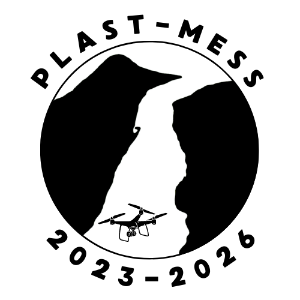Sedimentary Systems
Welcome to the page of the Sedimentary Systems Research Group!
Our research focus is on the hydro-sedimentary dynamics of fluvial to coastal to shallow-marine environments with the aim of linking modern processes to sedimentary records. The effort towards understanding the complex dynamics in these environments is often linked to important socio-economic topics, including the energy transition, carbon cycling and plastic pollution. Our research can be summarized in 5 key points:
Understanding dynamics of modern coastal-marine systems. Modern coastal areas are particularly complex as multiple processes (e.g., rivers, tides, waves, winds) and external factors (e.g., sea level changes, human impact) control their dynamics. Our research aims at deciphering the hydro-sedimentary dynamics of deltas, estuaries, straits, and tidal flats through remote sensing, direct field measurements (e.g., salinity), surficial sediment sampling, sediment cores and further laboratory analysis (e.g., grain size, age dating, TOC).
Carbon cycling and plastic pollution in coastal-marine areas. The complex dynamics in coastal areas have also an impact on important aspects in modern society, such as the distribution of (micro, meso and macro) plastics in the environment and the transport of carbon from land to sea. Despite the exponentially increasing awareness on the two topics, there is still a knowledge gap in understanding their transport and accumulation mechanisms in the environment. Our research also aims at understanding hydro-sedimentary dynamics in relation to carbon cycling and plastic pollution.
Reconstructing ancient coastal-marine systems. This research aims at reconstructing and interpreting ancient coastal-marine depositional systems from outcrop studies. Deltaic, estuarine, strait and other similar deposits show a high variety of sedimentary facies and architecture that we try to decipher using sedimentological field work and reconstructed 3D models. Our view is that sedimentary processes have worked in similar ways through geological time, and we aim at bridging the gap between studies on modern and ancient sedimentary systems.
Reservoir characterization and the energy transition. Investigating coastal-marine sedimentary units has also important implications for the reservoir characterization. Although historically this approach has been used to understand hydrocarbon reservoirs, nowadays this knowledge can be used to facilitate the energy transition from fossil to renewables. Coastal-marine sedimentary units are particularly suitable as carbon storage sites and geothermal energy production, but their detilard sedimentological characterization is a fundamental pre-requisite.
Drone- and LiDAR-based 3D models and machine learning. Our research in modern and ancient coastal-marine sedimentary systems is also based on 3D outcrop and elevation models created with photogrammetric and laser scanning techniques. We use highly precise RTK UAV and LiDAR for both ground and airborne surveys. The data are also analyzed using machine learning models.

Contacts
Group leader
emails
[Bitte aktivieren Sie Javascript]
[Bitte aktivieren Sie Javascript]
phone
+49 421 218-65252
Address
Room GEO 3320, Faculty of Geosciences, University of Bremen, Klagenfurter Strasse 2-4, 28359, Bremen, Germany
Postal address
Faculty of Geosciences, University of Bremen, PO Box 33 04 40, 28334 Bremen, Germany
administration
Susanne Müller-Wünsch
News
Coming soon the new project PLAST-MESS, funded by CRDF UniBremen, focusing on mapping plastic pollution along the Messina Strait using drones and Deep Learning.






